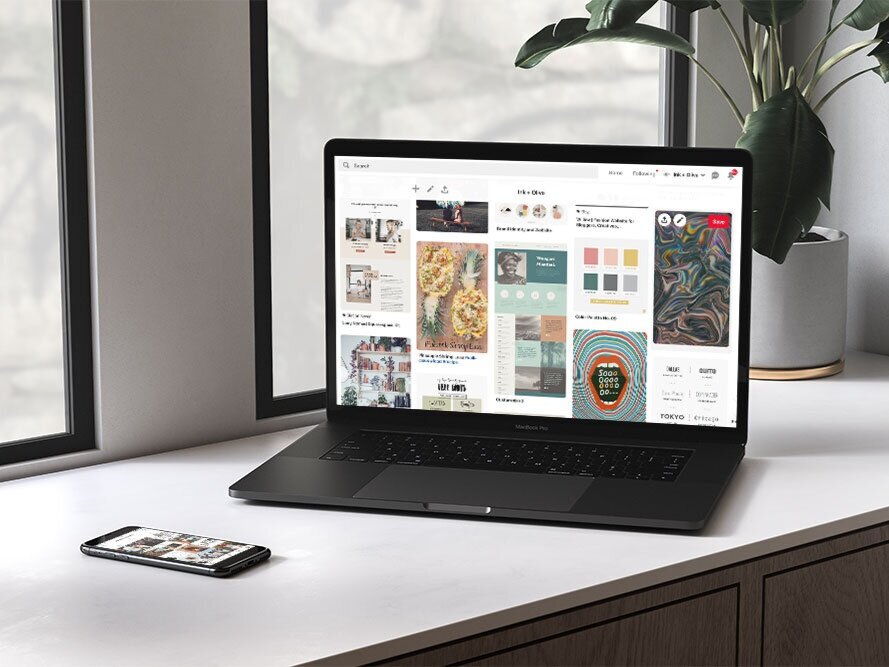Social Media for Business- Pinterest
This post was originally published on February 15, 2019 and has since been updated.
It’s no secret that social media, while always evolving, is here to stay. Not only do platforms like Facebook and Instagram change their layouts and algorithms, new social media channels are coming into fruition and it’s important to understand and adhere to each platform’s intended purpose. While it’s not always practical or even necessary for every business to be on every social media platform, be sure to read the entire Social Media Platforms for Business Series to understand the differences between social media platforms and how to implement best practices.
If you’re interested in improving your online presence, read on to learn about:
You’re on Pinterest everyday. You’re a pinning queen. You track which recipes you make, you upload your own pins, and you have a virtual closet worthy of envy. But what about utilizing Pinterest for business? Does it make sense for you? Should you start a new account? Read on for answers and be sure to pin this post to refer back to. 😉
As explained in the previous posts in this series, Facebook is typically the number one platform businesses should be on. So how do you know if Pinterest should be included in your repertoire? Let’s first take a look at the demographics of Pinterest users vs, your ideal client…
Pinterest reaches 83% of all women ages 25-54 in the U.S. That’s more than Instagram, Snapchat, and Twitter. In addition, 59% of millennials have discovered products on Pinterest.
If your target audience is made up of men over the age of 60, Pinterest likely isn’t the platform for you. However, if, for example, you run a coaching program targeted at millennial women, Pinterest could be your top converting platform. Or, if you sell style, beauty, or wellness products, you may want to consider that Pinterest helps users make decisions about what they want to do and buy with 58% of “Pinners” saying it helps them make shopping and purchasing decisions.
Pinterest Business Functionalities
Analytics:
Business Pinterest accounts offer analytics that allow you to see which pins are getting the most engagement, who is engaging with your pins, and which pins get the best click through rate to your website. Knowing these analytics allows you to work smart. Being able to see which pins perform the best allows you to make adjustments when creating future pins. Maybe you’ll find that certain Pin layouts are more visually appealing and attracting clicks. Maybe certain content types are getting more clicks. Once you know which content or products readers are most interested in, you can spend more time and resources on those topics and products.
Promoting Pins:
Business Pinterest accounts are able to pay to promote pins to their ideal audience. Whether your goal is to grow brand awareness, drive consideration, or grow sales, Pinterest offers guides and ad options to help reach those goals.
Best Practices
How often should I “Pin”?
Pin between 2 and 5 pieces of content each day. Like with any platform, consistency is key! Tools like Tailwind, with the option of a free plan, or Loomly, starting at $25 a month, allow you to plan ahead and bulk schedule your pins.
What do I pin?
Fresh, original content. Does your website have a blog? Create new pins for every relevant board within your Business Pinterest account and schedule your post to pin to each.
Boards: Whether you converted your personal Pinterest account into a business profile or created a new account for your business, ensure that each board relates back to your brand. If you are a Realtor, for example, you may have a board titled “[Name of Real Estate Business] Blog” where you pin every blog post that you publish. You may also have boards for each neighborhood that you work in as well as a board for each room in the home. So, if you write a blog post about the best kitchen paint colors to get your home sold, you would pin that blog post to “[Name of Real Estate Business] Blog” as well as your “Kitchens” board. You may even have a board devoted to paint colors that you would pin this post to as well.
Creating Pins:
Pinterest, like Instagram, is a visual platform. If your pins are going to incite engagement, they must be visually appealing and adhere to Pinterest’s best practices.
Use a tool like Canva to create your pins using a 2:3 dimension ratio
Overlay your image with bold text, telling the reader why they should click
Short, engaging copy should accompany each pin
Use relevant hashtags- no more than 20
Pinning Third Party Content:
If you pin third party content, always vet it first! Content should be useful and appealing to your target audience. In addition, you don’t want to pin content from your competitors.
What Now?
Getting Started with a Business Pinterest account:
If your current personal account is reflective of how you picture your business account and you want a single Pinterest account to host all of your boards, simply convert your personal account into a business account.
If you want to retain a single log in but want a separate account for business, add a business profile that will allow you to toggle between your two accounts.
Don’t have a personal account or want a completely separate login for your personal and business accounts? Visit pinterest.com/business/create/ and create your new Business Pinterest account.
What do you think? Is Pinterest right for your business? If you need help getting your business platforms up and running, you can reach out to me here.

